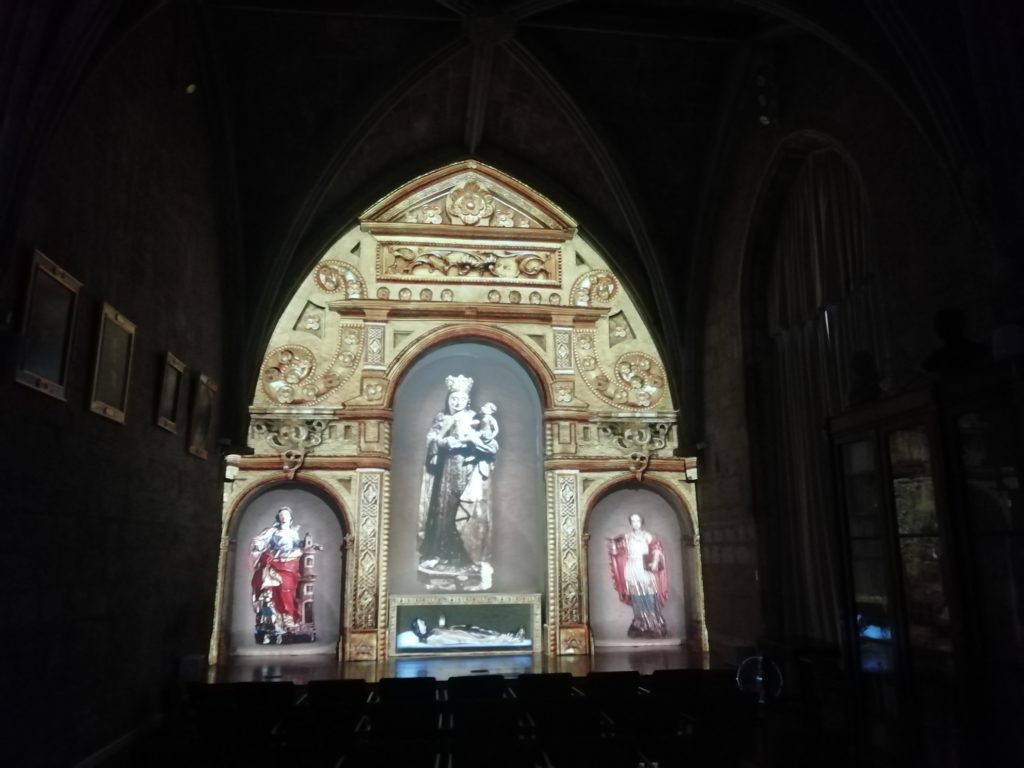By Joseph Tannous, a Lebanese Architect Living in Portugal
In the heart of ancient Lisbon, a roofless convent survived wrecking catastrophes ranging from the great earthquake of 1755 to follow up unstoppable tsunamis and scorching fires.
Being the city’s most striking example of the devastation left by the 1755 earthquake, the Convento do Carmo is located in the Chiado district of Lisbon soaring over the Rossio square right on the hill facing the Saõ Jorge castle. Sitting high on one of the 7 hills of the capital, the mighty Gothic arches of the convent rise high above its surrounding neighbourhood and stands out as a breath-taking monumental piece of the past.

Drawing of he convent in 1745, before the 1755 Lisbon earthquake
Credit: Guilherme Francisco Lourenço Debrie – Biblioteca Nacional de Portugal
Dating back to the late 14th century, specifically in 1389, the church was founded by Constable D. Nuno Alvares Pereira. At the time, it was one of the largest churches in the Portuguese capital and convent of the Order of Carmelites of the Ancient Observance. Thus, the Carmo Convent competed against the Lisbon Cathedral due to its greatness and monumentality. By 1551, the convent was shelter to 70 priests and 10 servants who dedicated their lives to assist the citizens of Lisbon.
Unfortunately, the set of the church was in ruins due to the most catastrophic natural disaster in Portuguese history, the great earthquake of 1755. Consequently, the roof completely collapsed severely damaging the church’s structure and its library (reportedly lost over 5000 books).
Today, the roofless nave open to the sky is all that remains of the Gothic monument illustrated by arches and rubble as evocative reminders of the destruction caused by the earthquake.

Fast forwarding to 1836, the military turned the habitable part of the church into its headquarters due to its strategic position and proximity to downtown Lisbon.
In 1864, the Museo do Carmo was first established on the ruins of the convent being the first Portuguese archaeological museum that exhibits artefacts from the Roman Empire until the 19th century.
During the reign of Queen Dona Maria I, a Neo-gothic intervention was executed in the late 19th century, inspired by the decaying Romanticism movement at the time, in an attempt to expose the beautiful arches that make up its majestic structure. Leading up to the Carnation Revolution of 1974, where the convent was the last stronghold of the President of Estado Novo, Marcelo Caetano.
Currently, the remaining ruins where the nave used to be house the Carmo Archaeological Museum. At the entrance, two statues of Lusitanian Warriors (dating back to the 1st century A.D.) welcome visitors into the exposition space. Exhibits include an eclectic collection of Roman remains such as ceramics and mosaics, a Visgothic pillar, shrunken heads, South American mummies, a jasper sculpture of the Virgin Mary, as well as a series of Roman tombs. At the side of the convent, the Terraços do Carmo connect the two levels – the convent on the hill and the suspended garden with a picturesque viewing point of the city. Evidently this impressive relic mainly shows traces of the great 1755 earthquake, a wide range of Portuguese history, and acts as a silent sanctuary in the midst of the bustling city despite being roofless.

Usually, this type of Gothic architecture is hidden beneath a roof. However, the Carmo convent remained fully exposed for everyone to see. As a result, the visitors get to explore the ruins wandering the roofless church as the sounds of the city flow into it.
How have the interior relics been persevered throughout all these years? Why the church’s roof has never been rebuilt? What can we do to maintain such a treasure from the past? It remains a mystery.
XXXXXXXXXXXXXXXXX